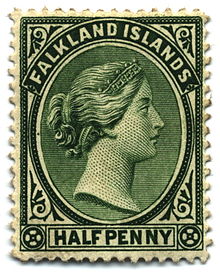Stamp collecting is the collecting of postage stamps and related objects. It is related to philately, which is the study of stamps. It has been one of the world's most popular hobbies since the late nineteenth century with the rapid growth of the postal service,[1] as a never-ending stream of new stamps was produced by countries that sought to advertise their distinctiveness through their stamps.
Stamp collecting is generally accepted as one of the areas that make up the wider subject of philately, which is the study of stamps. A philatelist may, but does not have to, collect stamps. It is not uncommon for the term philatelist to be used to mean a stamp collector. Many casual stamp collectors accumulate stamps for sheer enjoyment and relaxation without worrying about the tiny details. The creation of a large or comprehensive collection, however, generally requires some philatelic knowledge and will usually contain areas of philatelic studies.
Collecting
Postage stamps are often collected for their historical value and geographical aspects and also for the many subjects depicted on them, ranging from ships, horses, and birds to kings, queens and presidents.[2]
Stamp collectors are an important source of income for some countries who create limited runs of elaborate stamps designed mainly to be bought by stamp collectors. The stamps produced by these countries may exceed their postal needs, but may also feature attractive topical designs that many collectors desire.
History
It has been suggested that John Bourke, Receiver General of Stamp Dues in Ireland, was the first collector. In 1774 he assembled a book of the existing embossed revenue stamps, ranging in value from 6 pounds to half a penny, as well as the hand stamped charge marks that were used with them. His collection is preserved in the Royal Irish Academy, Dublin.[3]
Postage stamp collecting began at the same time that stamps were first issued, and by 1860 thousands of collectors and stamp dealers were appearing around the world as this new study and hobby spread across Europe, European colonies, the United States and other parts of the world.
The first postage stamp, the Penny Black, was issued by Britain in May 1840 and pictured a young Queen Victoria. It was produced without perforations (imperforate) and consequently had to be cut from the sheet with scissors in order to be used. While unused examples of the Penny Black are quite scarce, used examples are quite common, and may be purchased for $20 to $200, depending upon condition.
People started to collect stamps almost immediately. One of the earliest and most notable was John Edward Gray. In 1862, Gray stated that he "began to collect postage stamps shortly after the system was established and before it had become a rage".
Women stamp collectors date from the earliest days of postage stamp collecting. One of the earliest was Adelaide Lucy Fenton who wrote articles in the 1860s for the journal The Philatelist under the name Herbert Camoens.
As the hobby and study of stamps began to grow, stamp albums and stamp related literature began to surface, and by the early 1880s publishers like Stanley Gibbons made a business out of this advent.
Children and teenagers were early collectors of stamps in the 1860s and 1870s. Many adults dismissed it as a childish pursuit but later many of those same collectors, as adults, began to systematically study the available postage stamps and publish books about them. Some stamps, such as the triangular issues of the Cape of Good Hope, have become legendary.
Stamp collecting is a less popular hobby in the early 21st century than it was a hundred years ago. In 2013, the Wall Street Journal estimated the global number of stamp collectors was around 60 million.[6] Tens of thousands of stamp dealers supply them with stamps along with stamp albums, catalogues and other publications. There are also thousands of stamp (philatelic) clubs and organizations that provide them with the history and other aspects of stamps. Today, though the number of collectors is somewhat less, stamp collecting is still one of the world's most popular indoor hobbies.
Equipment
A few basic items of equipment are recommended for proper stamp collection. Stamp tongs help to handle stamps safely, a magnifying glass helps in viewing fine details and an album is a convenient way to store stamps. The stamps need to be attached to the pages of the album in some way, and stamp hinges are a cheap and simple way to do this. However, hinging stamps can damage them, thus reducing their value; today many collectors prefer more expensive hingeless mounts. Issued in various sizes, these are clear, chemically neutral thin plastic holders that open to receive stamps and are gummed on the back so that they stick to album pages. Another alternative is a stockbook, where the stamps drop into clear pockets without the need for a mount. Stamps should be stored away from light, heat and moisture or they will be damaged.
Stamps can be displayed according to the collector's wishes, by country, topic, or even by size, which can create a display pleasing to the eye. There are no rules and it is entirely a matter for the individual collector to decide. Albums can be commercially purchased, downloaded or created by the collector. In the latter cases, using acid free paper provides better long-term stamp protection.
*) Collect by : https://en.wikipedia.org/wiki/Stamp_collecting




Tidak ada komentar:
Posting Komentar